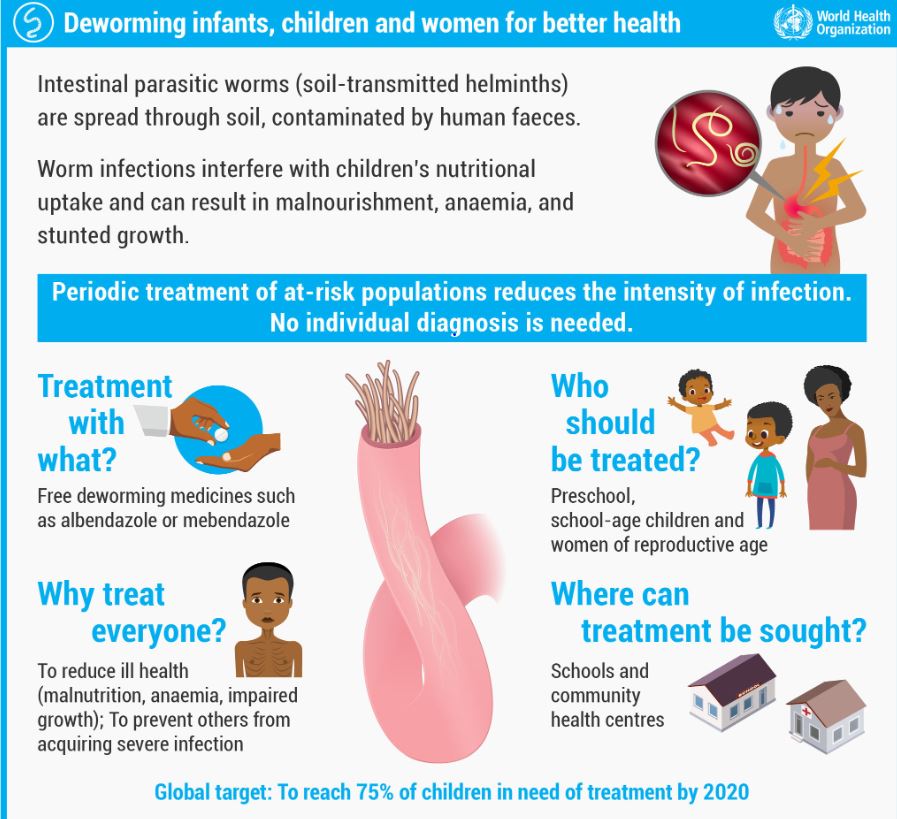What is soil transmitted helminthiasis?
 Click to see larger imageSoil-transmitted helminthiases are widely distributed in tropical and subtropical areas. Worldwide, it has been estimated that more than one billion people are infected with soil-transmitted helminthiases infections, of whom more than 300 million suffer from severe morbidity.
Click to see larger imageSoil-transmitted helminthiases are widely distributed in tropical and subtropical areas. Worldwide, it has been estimated that more than one billion people are infected with soil-transmitted helminthiases infections, of whom more than 300 million suffer from severe morbidity.
There are four species of helminth causing soil-transmitted helminthiases: hookworms Ancylostoma duodenale and Necator Americans, roundworm Ascariasis lumbricoides, and whipworm Trichuris trichura. Each species is responsible for a separate set of signs and symptoms, in fact for a separate disease. Symptoms include nausea, tiredness, abdominal pain and loss of appetite. These infections aggravate malnutrition and amplify rates of anaemia.
Countries with endemic areas requiring interventions in the Eastern Mediterranean Region include Afghanistan, Djibouti, Iraq, Pakistan, Somalia, Sudan, Syria and Yemen. In 2018, about 64 million children required preventative treatment against soil-transmitted helminths.
Soil-transmitted helminthiases are targeted for elimination as a public health problem1 by 2030 in at least 96 countries globally.
1 <2% proportion of STH infections with moderate or heavy intensity due to A. lumbricoides, T. trichuria, N. americanus and A. duodenale.


